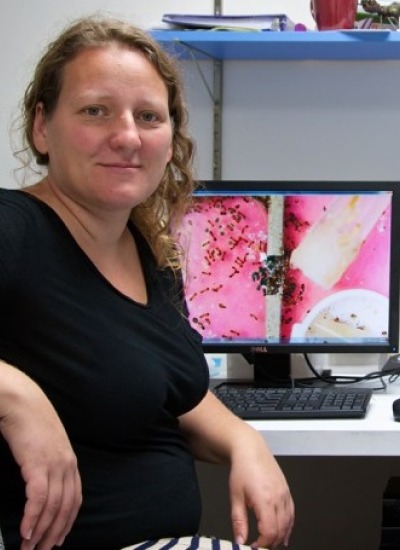Anna R Dornhaus
Publications
Abstract:
Conspecific ant colonies are often overdispersed, i.e. they are further apart than they would be if they were distributed randomly. This overdispersion might be driven by competition for food resources or nest sites and may result from established colonies preventing incipient colonies from settling too close to them. We investigated another possible mechanism for overdispersion: active nest choice by emigrating colonies. Colonies may be influenced by the presence of conspecifics when they are emigrating from a nest that has become uninhabitable. In the laboratory, we presented Temnothorax albipennis ant colonies with a choice of three new nests, which were equidistant from their old nest site. The new nests were identical except that one was near to an established conspecific colony. The emigrating colonies significantly preferred the new nest site that was furthest from the resident colony. This selection was not just the result of access to the other nests being blocked by aggression from the resident colony; emigrating colonies thus made active choices. Odour cues may influence nest selection: odours left around nest sites by foreign colonies deterred nest occupancy. There was more aggression near the resident colony, but this appeared to be caused by the greater density of resident ants there rather than those ants being more aggressive per capita. We also observed a relatively high proportion of fusions between colonies. Possible reasons for this are considered together with their implications. © 2007 The Association for the Study of Animal Behaviour.
Abstract:
In bumble bees (Bombus spp.), where workers within the same colony exhibit up to a tenfold difference in mass, labor is divided by body size. Current adaptive explanations for this important life history feature are unsatisfactory. Within the colony, what is the function of the smaller workers? Here, we report on the differential robustness to starvation of small and large worker bumble bees (Bombus impatiens); when nectar is scarce, small workers remain alive significantly longer than larger workers. The presence of small workers, and size variation in general, might act as insurance against times of nectar shortage. These data may provide a novel, adaptive explanation, independent of division of labor, for size polymorphism within the worker caste. © Birkhäuser Verlag, Basel/Switzerland 2009.


